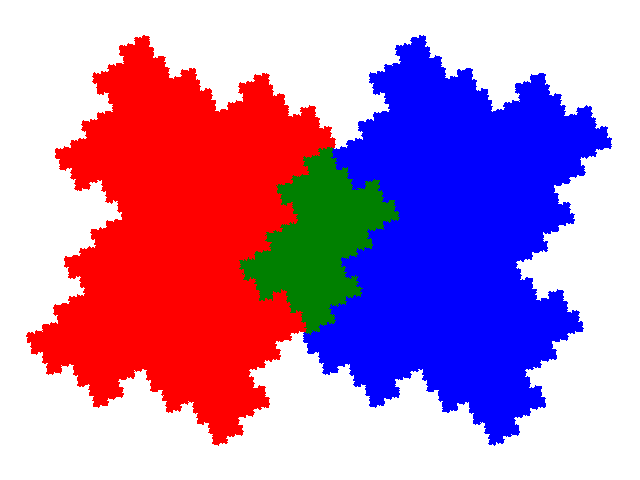
One of the dissection polynomials for the 6th unit cubic Pisot is 2c+c3=1, so there is the possibility of a order 3 symmetric tile, with the smaller element at the centre, and the other two elements symmetrically flanking it. On investigation this tile is found to exist.

As this tile has c2 symmetry it is 8- (23-)fold degenerate - each of the three elements can be placed in one of two orientations. For the same reason the grouped element technique can be used to generate 2 demi-symmetric tiles.
There are obviously many additional dissections with more elements, include some symmetric dissections. An order 5 version (2c+2c4+c6) is formed by dissecting the central element. This gives rise to 10 further demi-symmetric tiles.
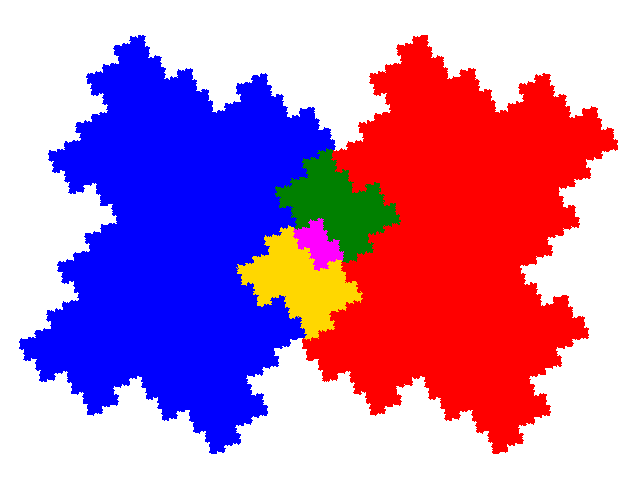
Symmetric order 7 versions are formed by dissection of the outer elements of the order 3 version (4c2+c3+2c4) or of the innermost element of the order 5 version (2c+2c3+2c7+c9). The former is the source of an additional 48 demi-symmetric tiles, and the latter of an additional 52 demi-symmetric tiles.
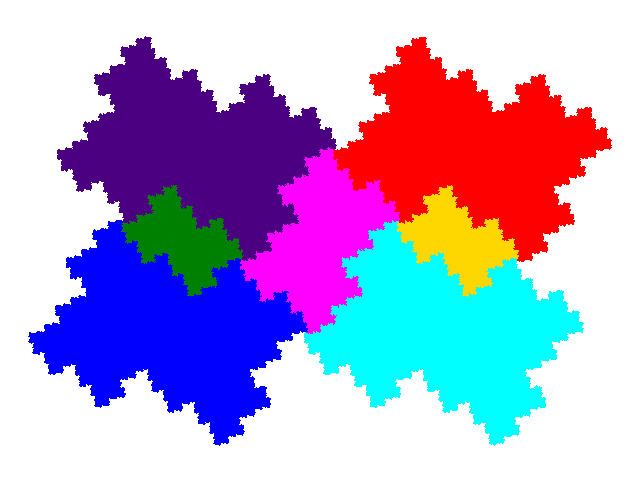
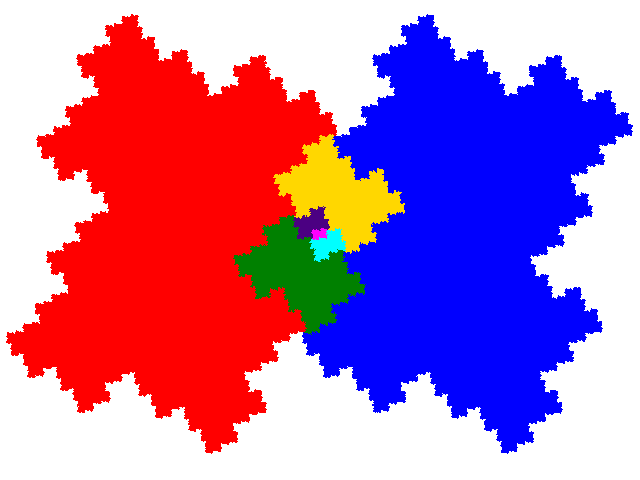
Symmetric order 9 versions are formed by dissection of all elements of the order 3 version (4c2+4c4+c6), by the dissection of the two intermediate elements of the order 5 version (2c+4c5+c6+2c7) or by dissection of the innermost element of the order 7 version (2c+2c4+2c7+2c9+c12). These would give rise to hundreds of order 9 demisymmetric tiles.
There is a great (uncountably infinite) number of tilings of the plane by the symmetric tile, with one or more copies, of various sizes, of the tile forming the unit cell.
If the IFS is { T1:p → ap - 1;
T2:p → ap + 1; T3:p →
a3p } then the obvious candidate values for the tiling
vectors are 4 and 4a. However this leads to a tiling
with 6 elements in the unit cell (signature 033344 or
03342). Shuffling copies to find a tiling with a
single copy in the unit cell (signature 0) I found that the tiling
vectors were 4(1 + a3 + a6 + a9 +
…) and 4a(1 + a3 + a6 + a9 +
…). These geometric series sum to 4/(1-a3) and
4a/(1-a3). These numbers can be rewritten as 3 -
a - a2 and a(3 - a - a2).
There are several ways of notating tilings. For example, as above the signature (the relative sizes of the copies in the cell), in either longhand (e.g. 033) or shorthand (e.g 032) form, can be used, with the offsets given in brackets in the cases where there are multiple tilings for a unit cell. But the signature is not always unique. For example there are two tilings with signature 00111. In this case this can be resolved by dividing the tiling into columns, and ordering the copies in column order, giving 00111 and 01011, repeating for each row. A middle dot can be used to delimit groups of copies within a unit cell, e.g. 0·353 representing a dissection of the smaller element of the 0·2 tiling.
An alternative notation is to use the tiling vectors. But this breaks down when additional tilings are created by dissecting one or more copies in the unit cell, as the tiling vectors are unchanged by such. Even the combination of signature and tiling vectors is not unique, as there are different dissections of the symmetric tile with the same signature. It may be that nothing less than listing the cell transforms (the affine transforms mapping a largest copy in the unit cell to the other copies in the unit cell) and tiling vectors is sufficient, but the vector element of cell transforms can be quite long winded, so this is not exactly convenient. For the time being I will use signatures, and note when they are not unique.
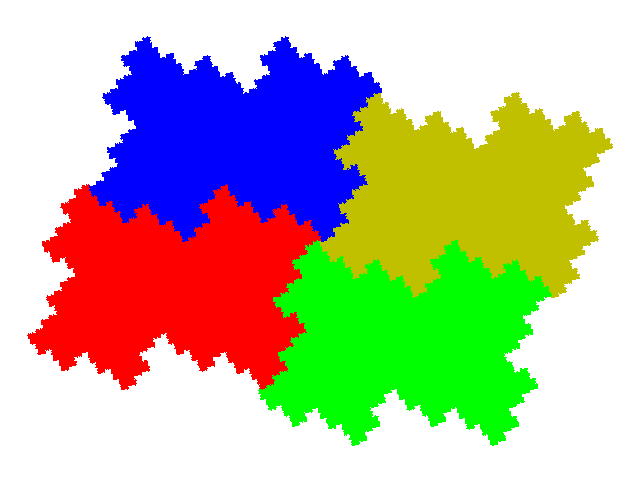
There are six ways of creating additional tilings.
an = 4an, and
tn = 4an/(1-a3) .±(t0+t2)), or successive
columns slid upwards (or downwards)
(±(t1+t3)). In some cases this results
in a tiling with the same unit cell, but different tiling vectors, but more
often then not moving rows (columns) in the right direction opens up a gap
which has to be filled in by additional copies. Furthermore in some tilings
(e.g. 00131 and 0131131) successive rows can be slid
rightwards (or leftwards) (±t0), or successive
columns can be slid upwards (or downwards) (±t1),
giving tilings with the same unit cell, but different tiling vectors. In
these cases the unit cell can be redrawn to give herringbone tilings.Two row tilings exist when the rows are pulled apart by
t2 (02), -t3
(022), -t4 (0344),
t6 (05464) and
t5+t6
(0445364); possibly there
are more with large numbers of small copies. Three and upwards row tilings
exist for sums of these values (and t1).
t5+t6-t4
(0·342·445364) can be
dissected differently to give 0·234455666, which is a sort of
2nd class two row tiling.t6-t3
(0·22·5464) is the tiling for
t5+t6+t5+t6
(0·445364·445364)
with many of the copies combined to make two larger copies.Two column tilings exist when the columns are pulled apart by
-t2 (01), -t3
(03), t4 (033),
t5 (0455), -t7
(06474) and
-(t6+t7)
(0546374); possibly there are more with
large numbers of small copies. Three and upwards row tilings exist for sums of
these values (and t0).
It can be seen that there are parallels between the two row and two column tilings, which are completed by adding 00 as a two row tiling. (00 is the same tiling as 0, except that pairs of unit cells are arbitarily combined.) For each two row tiling there is a corresponding two column tiling, with the tilings having the same number of copies in the unit cell, and the copies (except for the first) having the same relative sizes and positions, with all the numbers increased by one, and the signs on the vectors reversed. Consequently analogous complications occur for three and greater numbers of columns.
In both cases there is one case where the unit cell belongs to two different tilings, the second being created from the first by sliding successive columns (rows) upwards (rightwards). However the cases are not the corresponding tilings, being the two row tiling 0344 and the two column tiling 03.
signature: 01 tiling vectors: cell transforms:
|
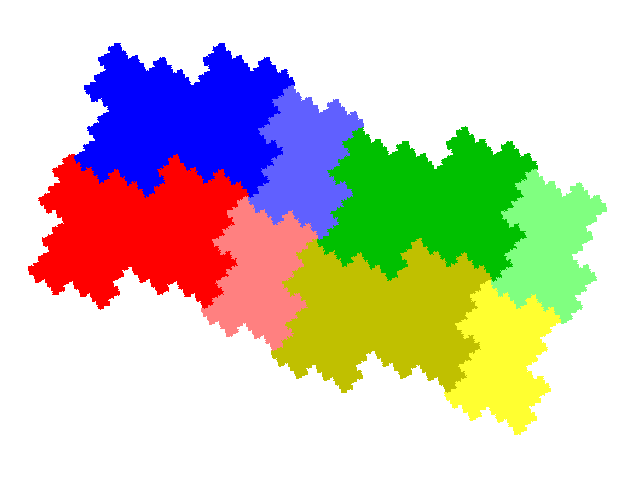 |
signature: 02 tiling vectors: cell transforms:
|
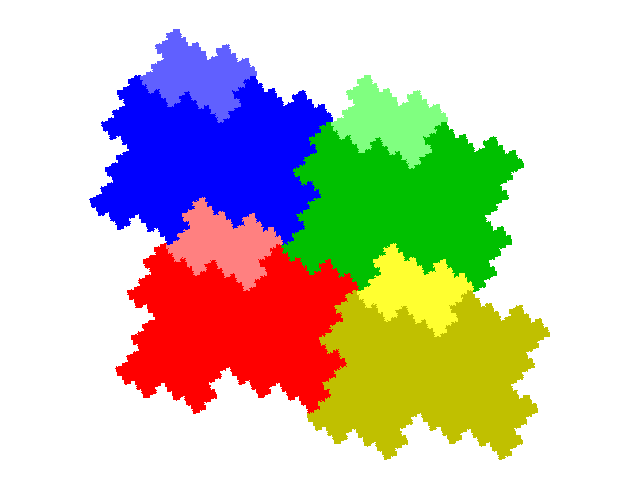 |
signature: 03(0) tiling vectors: cell transforms:
|
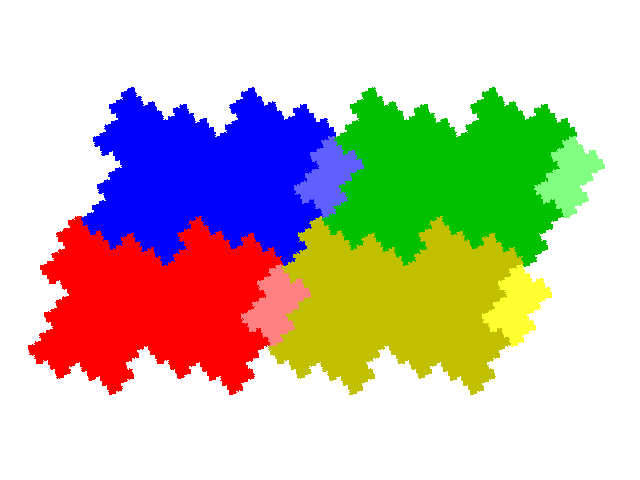 |
signature: 03(a0/2) tiling vectors: cell transforms:
|
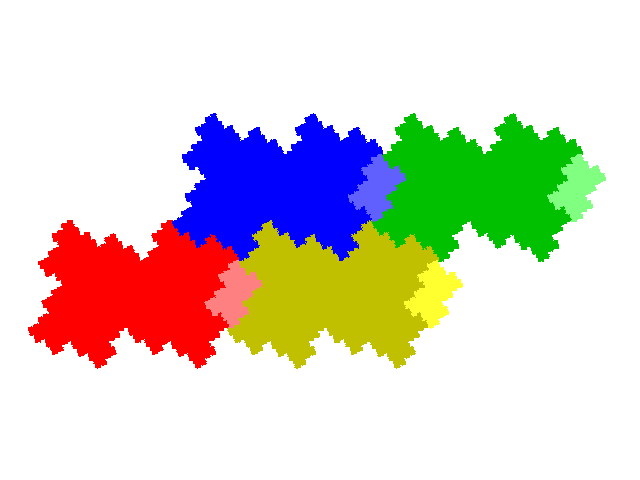 |
signature: 022 tiling vectors: cell transforms:
|
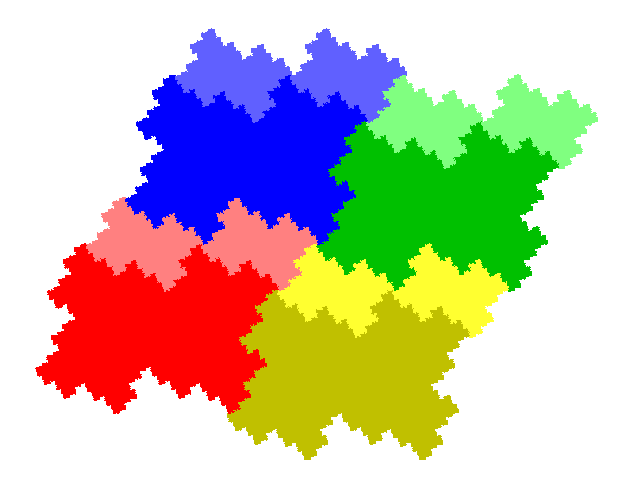 |
signature: 033 tiling vectors: cell transforms:
|
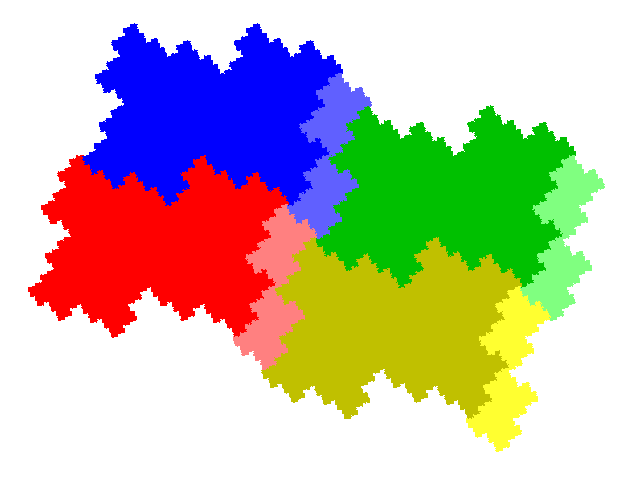 |
signature: 0344(0) tiling vectors: cell transforms:
|
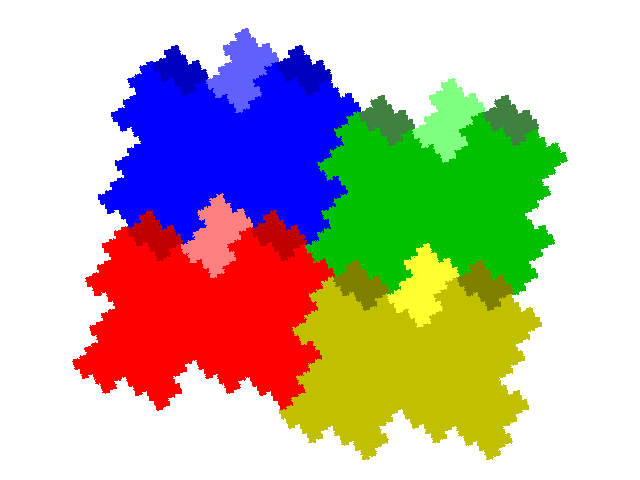 |
signature: 0344(a0/2) tiling vectors: cell transforms:
|
 |
signature: 0455 tiling vectors: cell transforms:
|
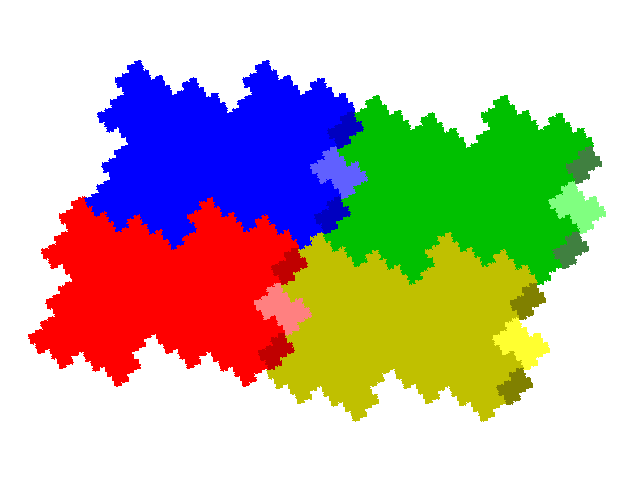 |
signature: 05464 tiling vectors: cell transforms:
|
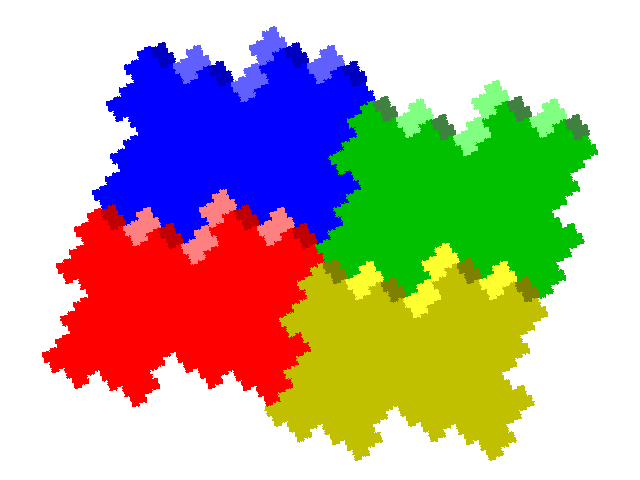 |
signature: 06474 tiling vectors: cell transforms:
|
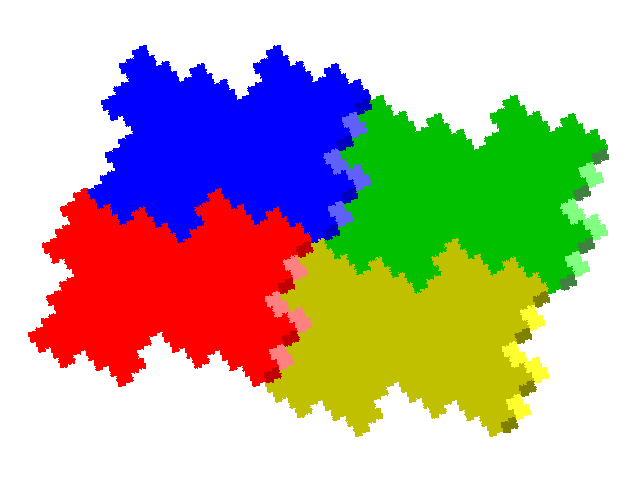 |
signature: 0445364 tiling vectors: cell transforms:
|
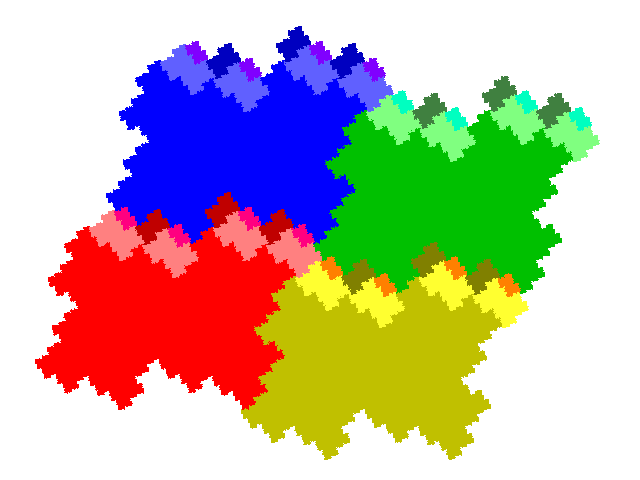 |
signature: 0546374 tiling vectors: cell transforms:
|
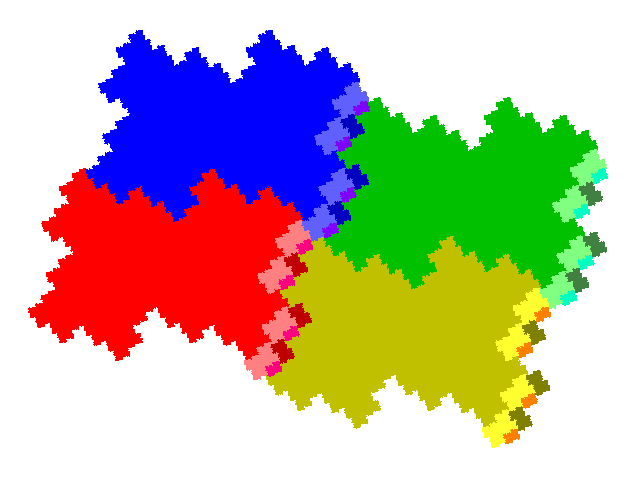 |
Given two row (column) tilings, three row (column) tilings are generally easier to generate. One can take a tiling, and add the last rows (columns) of the same or another tiling. The modifications to tiling vectors and to the cell transforms for the last rows (columns) are relatively simple to identify.
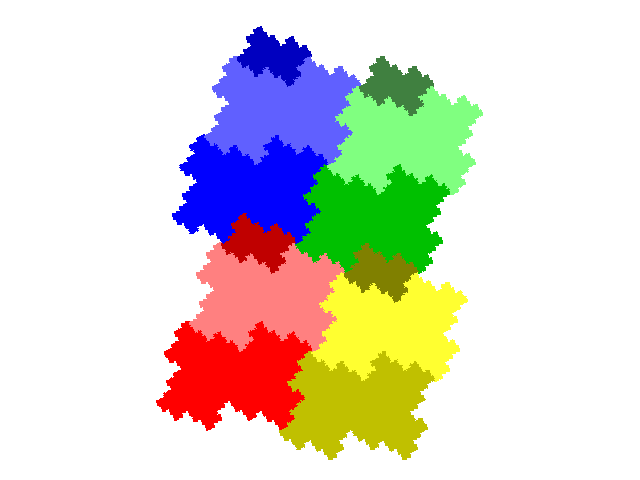
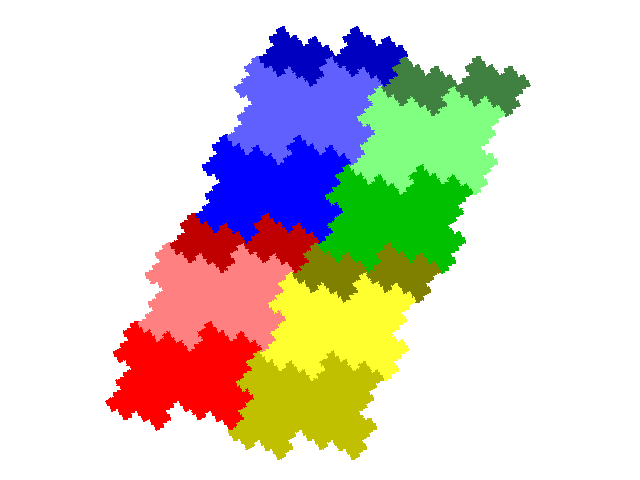
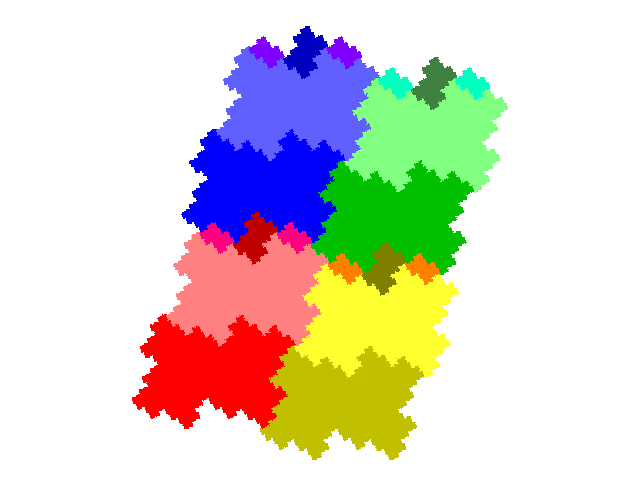
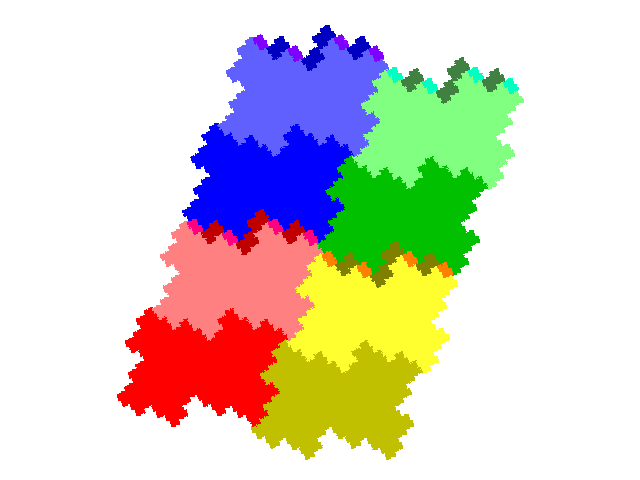
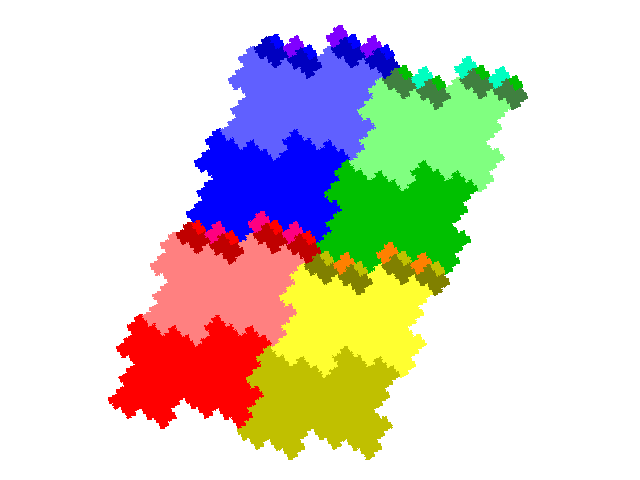
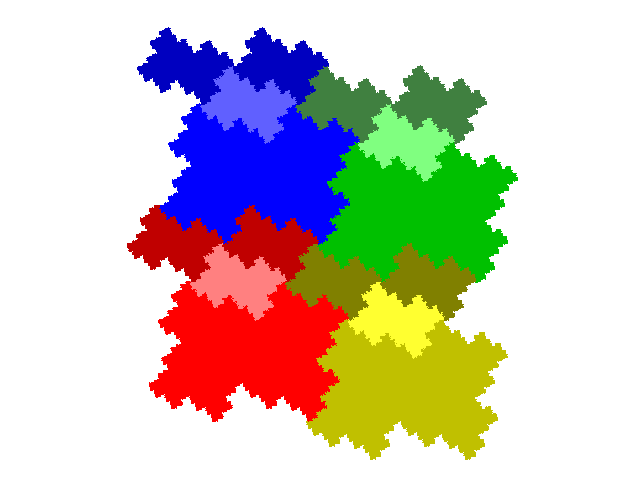
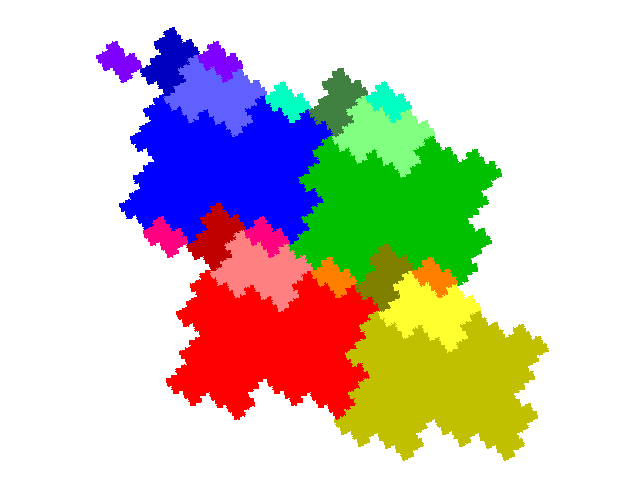
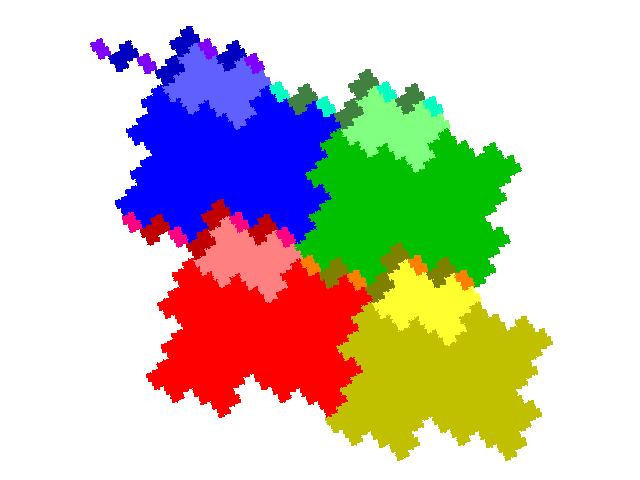
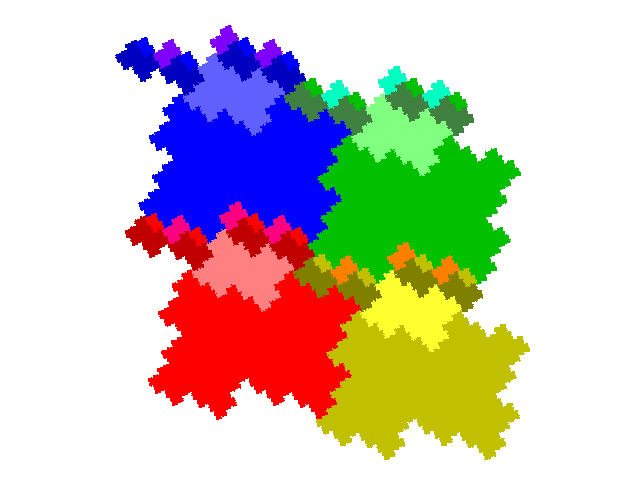
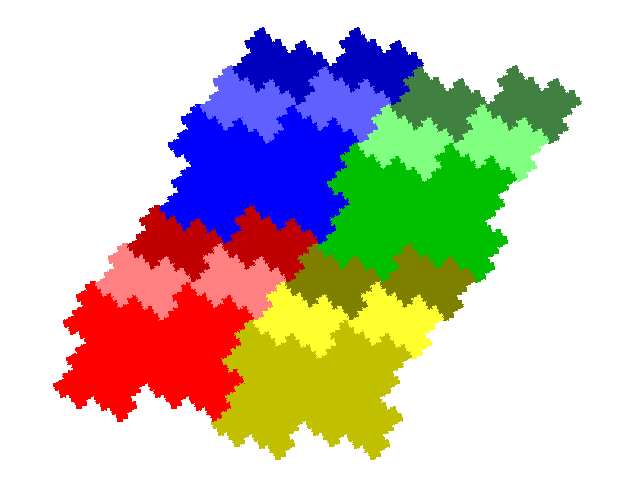

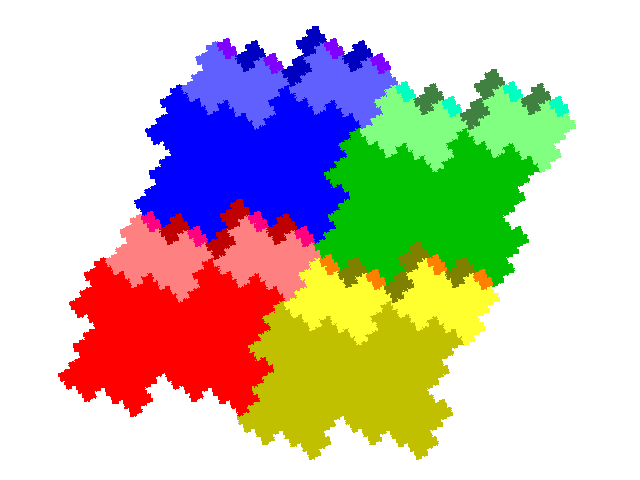
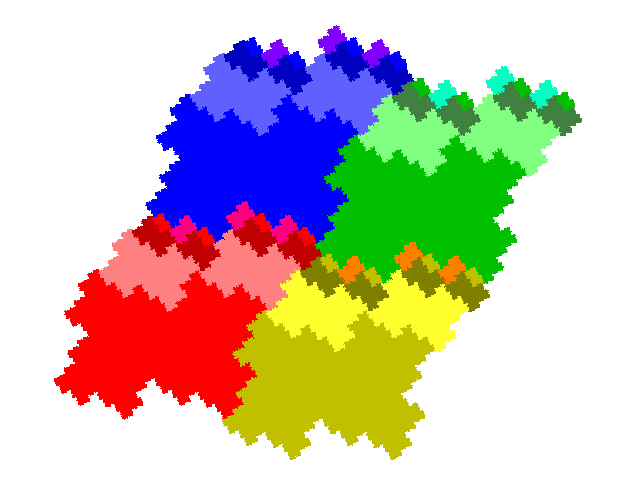
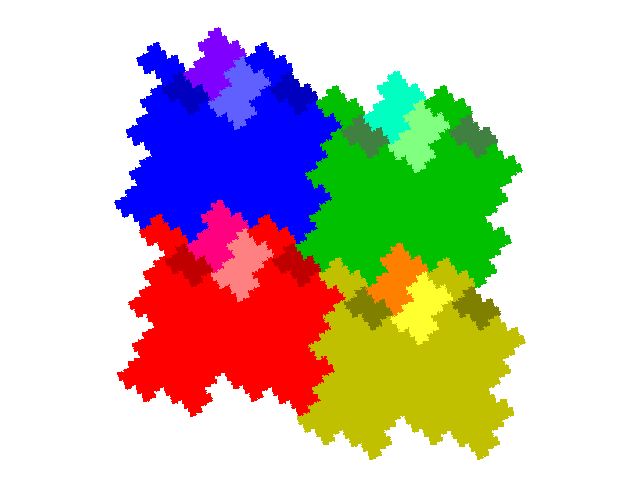
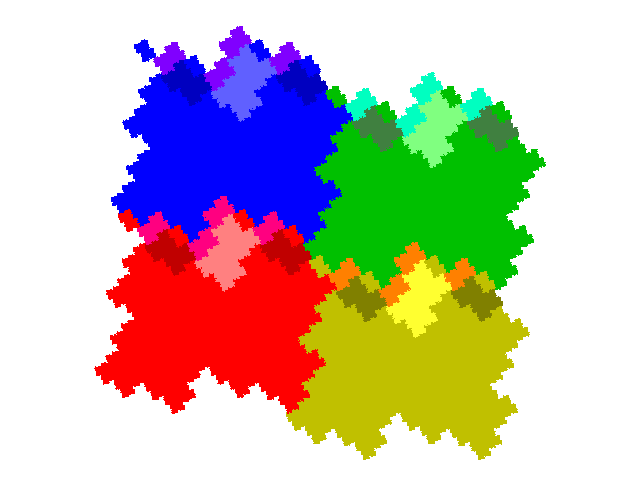
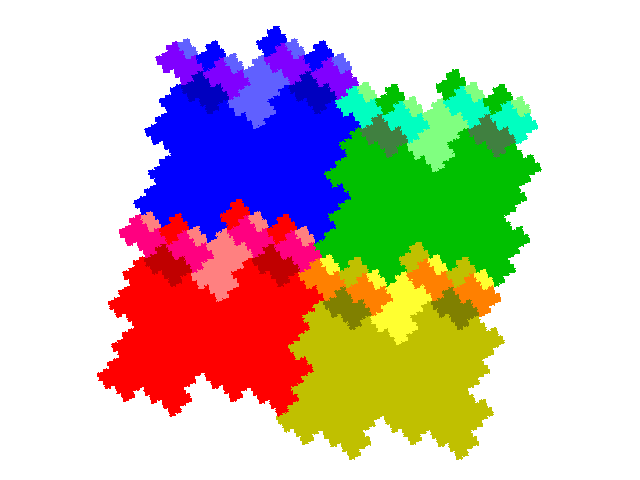
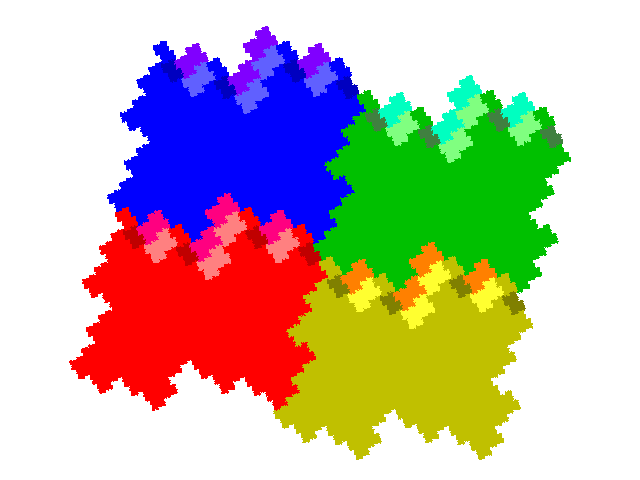
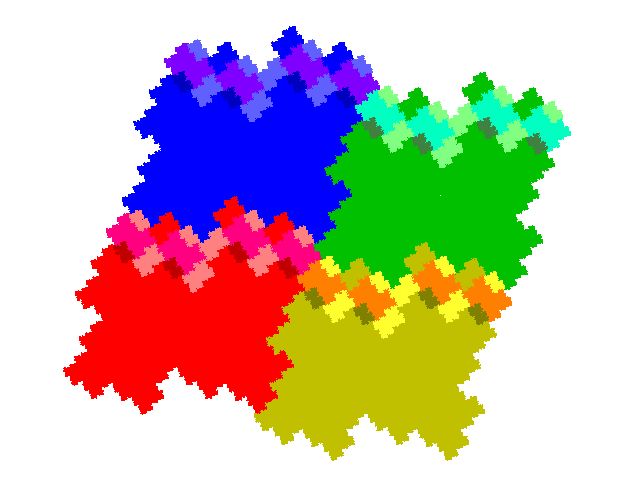
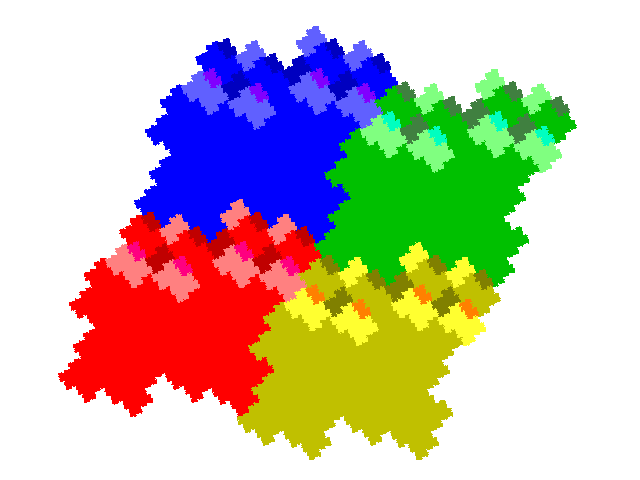
The three column tilings are 001, 003, 0033, 00455, 006474, 00546374, 011, 013, 0133, 01455, 016474, 01546374, 0333, 03455, 036474, 03546374, 034, 033455, 0336474, 033546374, 0445455, 04556474, 04566374, 064746474, 06474546374 and 0546374546374.
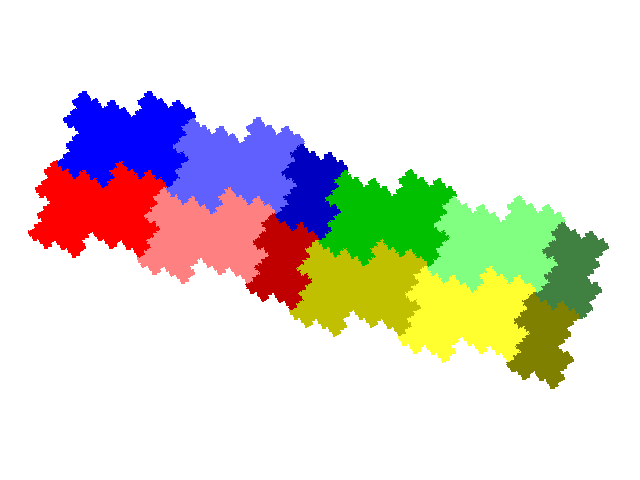
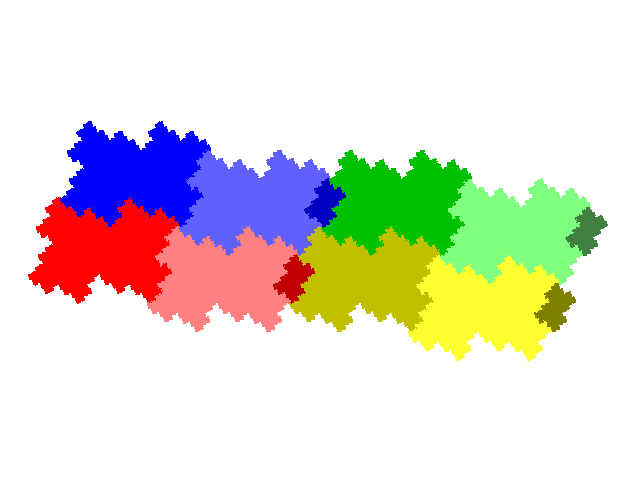
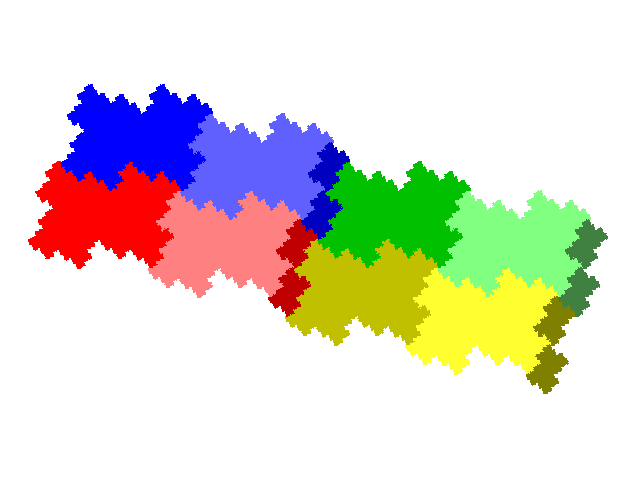
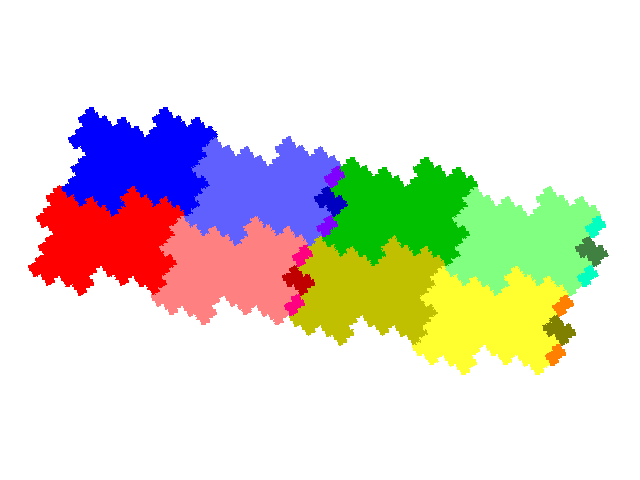
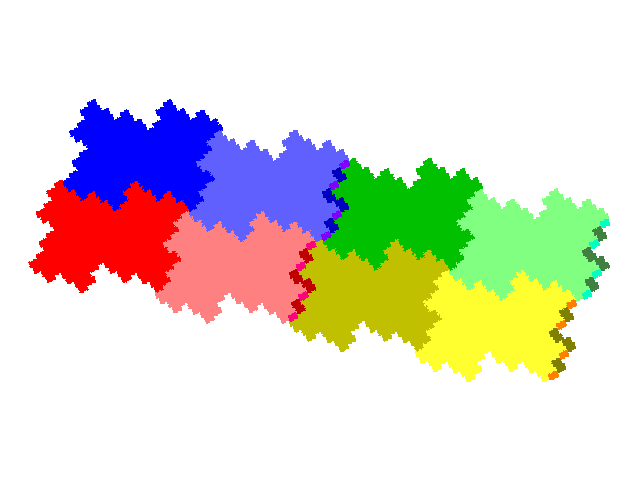
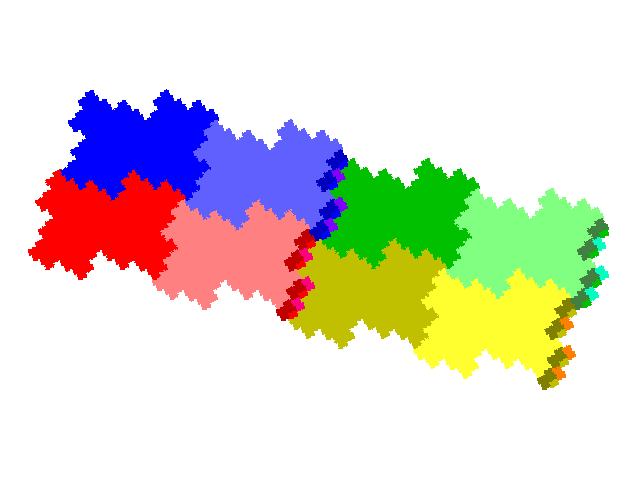
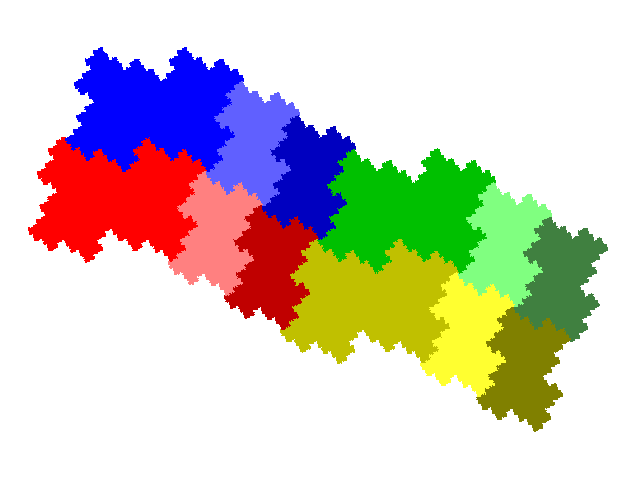
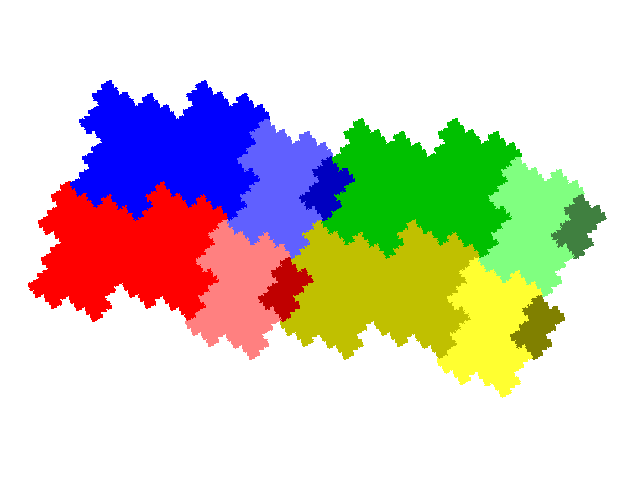
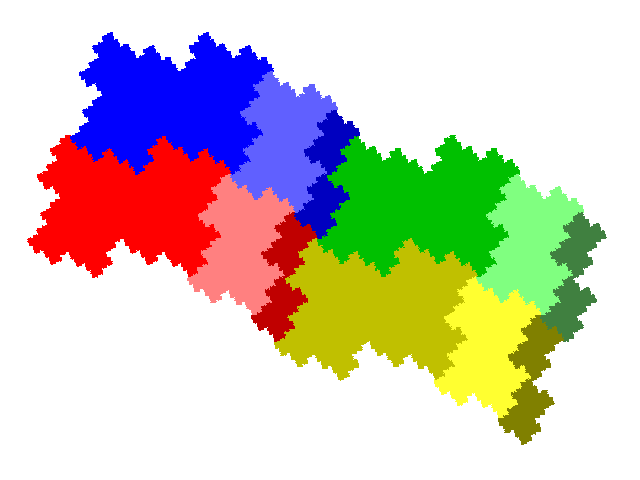
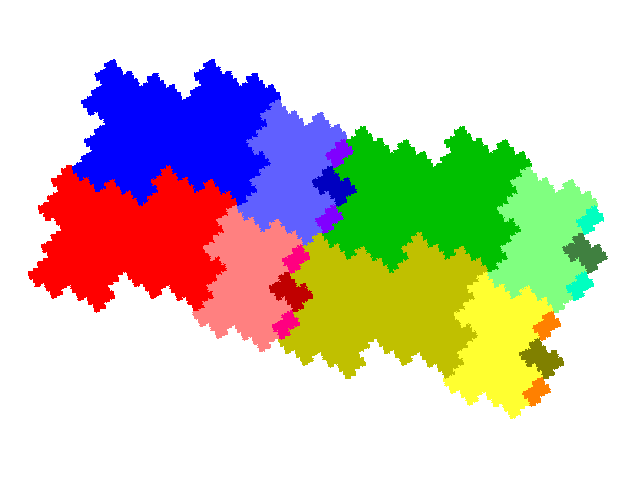
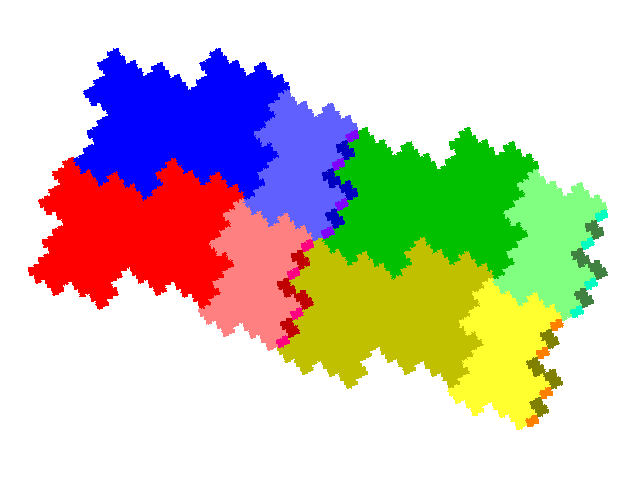
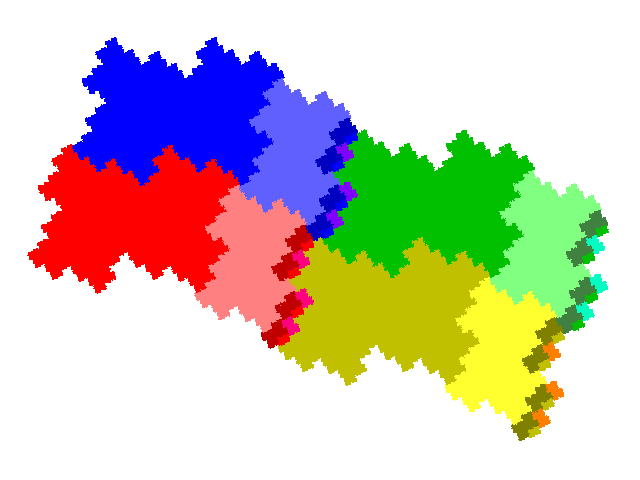 ,
, 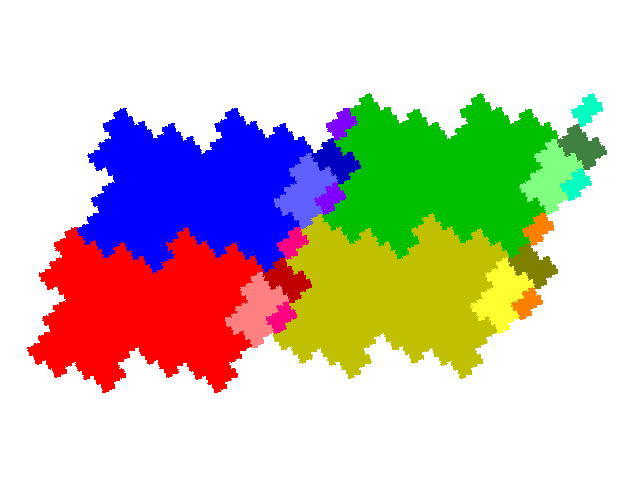
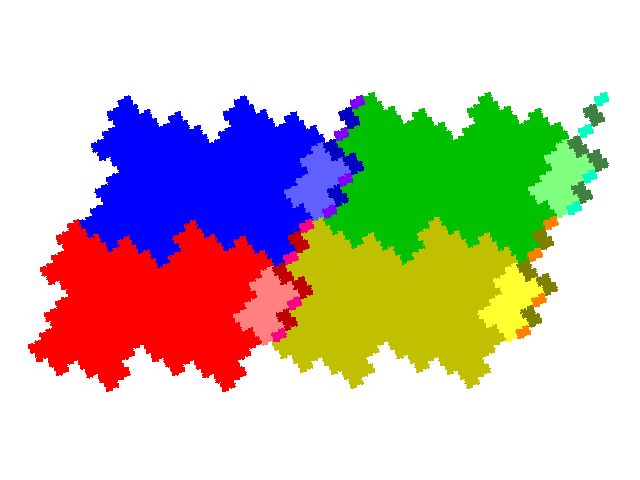
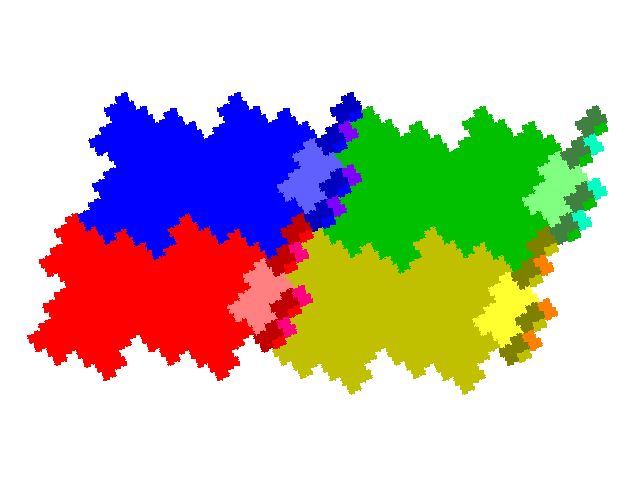
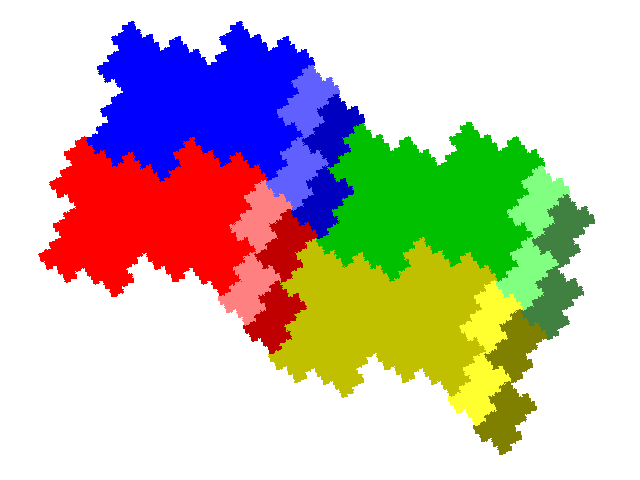
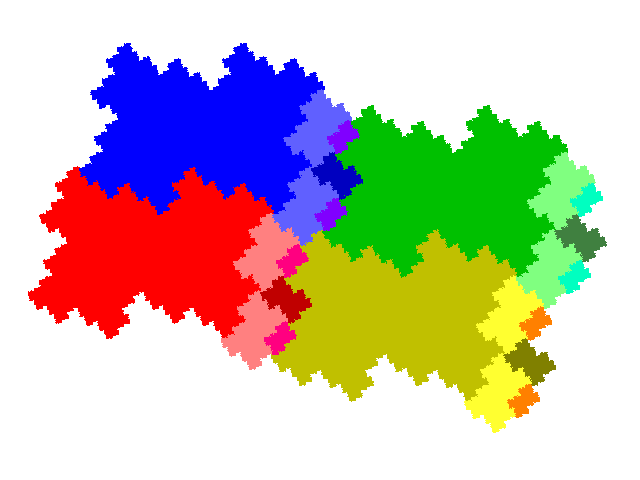
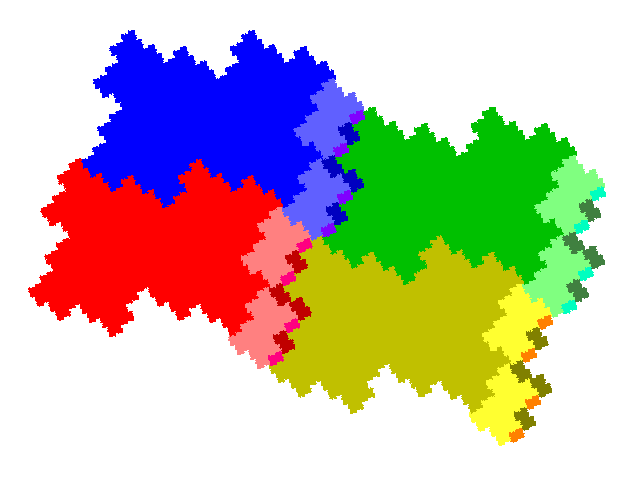
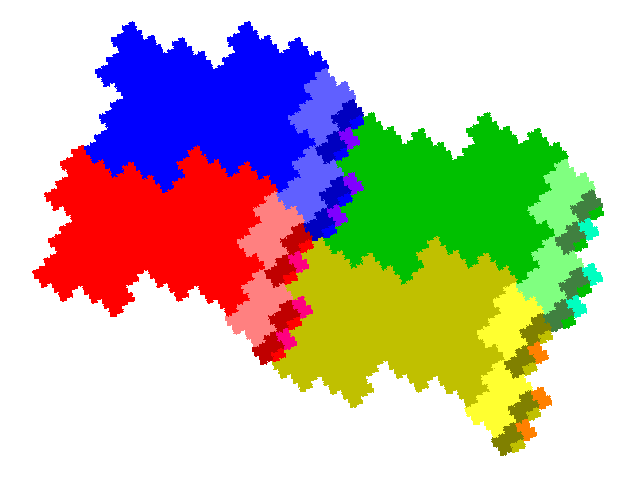
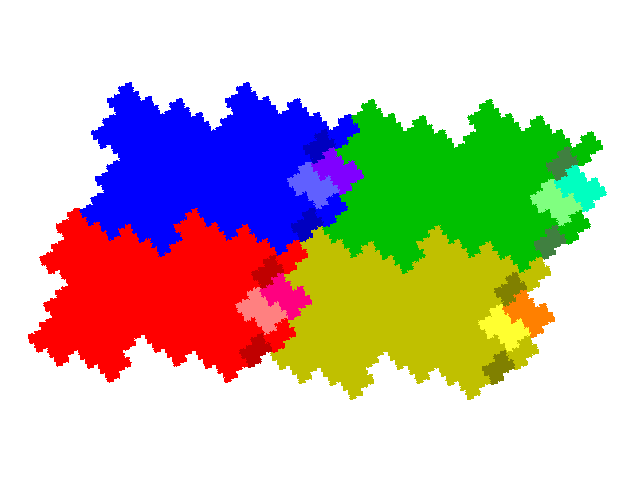
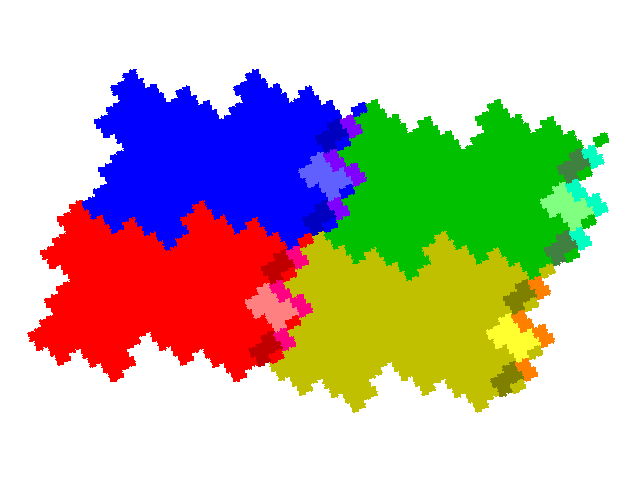
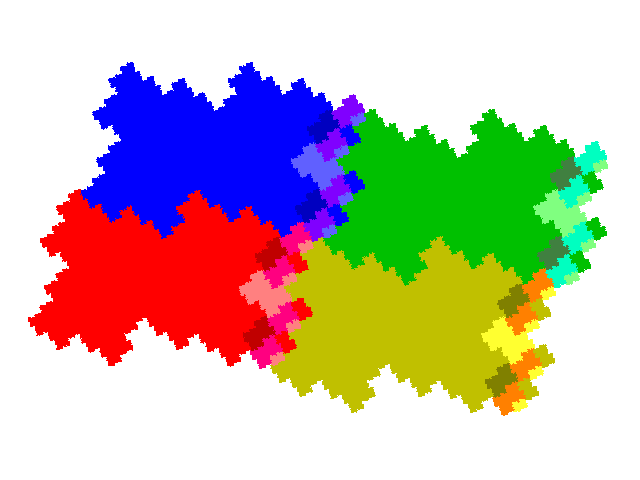
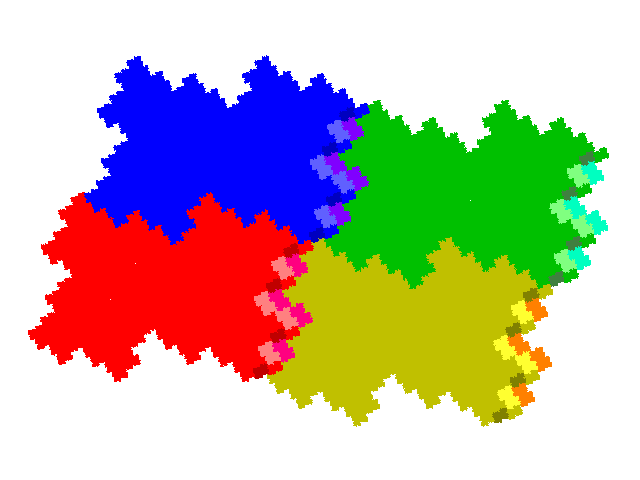
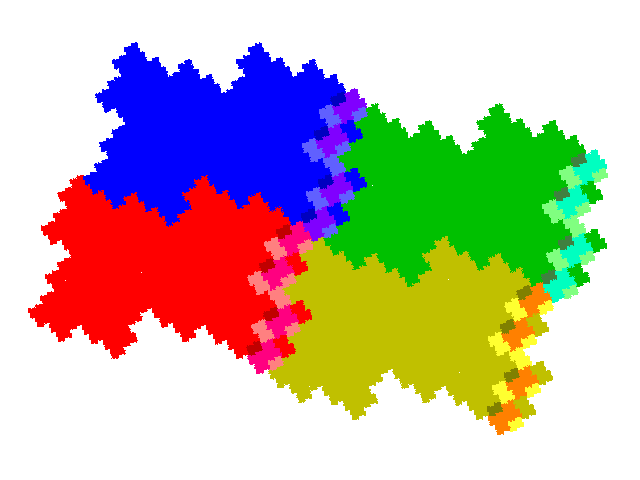
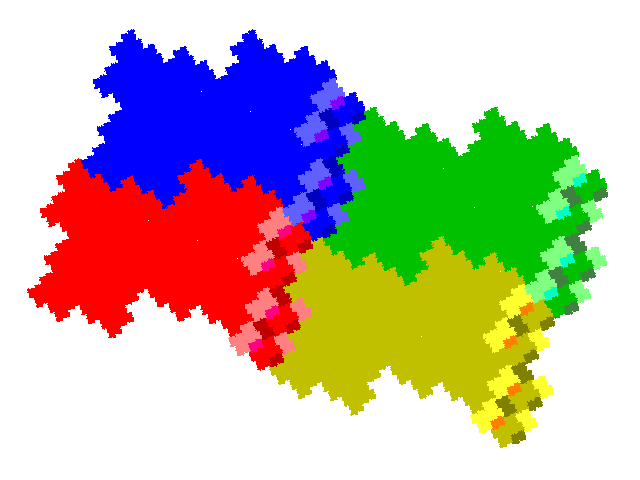
In most cases simultaneously pulling both the rows and columns by the vectors identified above generates new tilings, composed of the union of the elements of the two row and two column tilings, with any gaps filled in by additional copies of the tile. In three cases there is an overlap (in which case to generate a tiling one has to dissect an copy and remove one of the resulting copies), and in two pairs of cases, once the gap has been filled in the same tiling results. The signatures of the resulting tiles are shown in the table immediately below.
| 01 | 03 | 033 | 0455 | 06474 | 0546374 | |
| 02 | 012 | 023·2 | 02455·44 | |||
| 022 | 0122·2 | 0223 | 02233·3 | 022455·5 | 026474·677 | 022546374·55677 |
| 0344 | 01344·4 | 03344·3 | 033344 | 0344455·4 | 03446474·66 | 0344546374·55677 |
| 05464 | 015464·566 | 035464·44 | 0335464·6 | 04555464·5 | 054646474·6 | 05464546374·6 |
| 0445364 | 01445364·44566 | 03445364·5 | 033445364·46 | 0455445364·5 | 04453646474·67 | 0445364546374·567 |
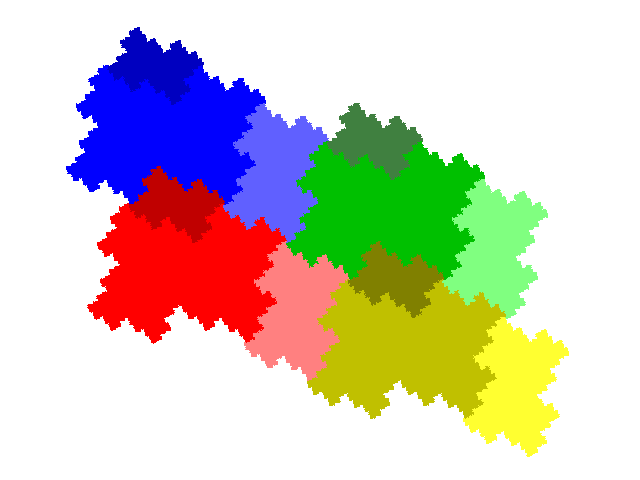
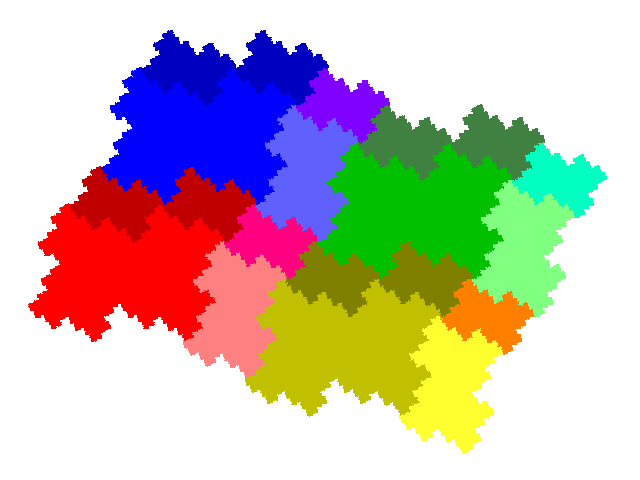
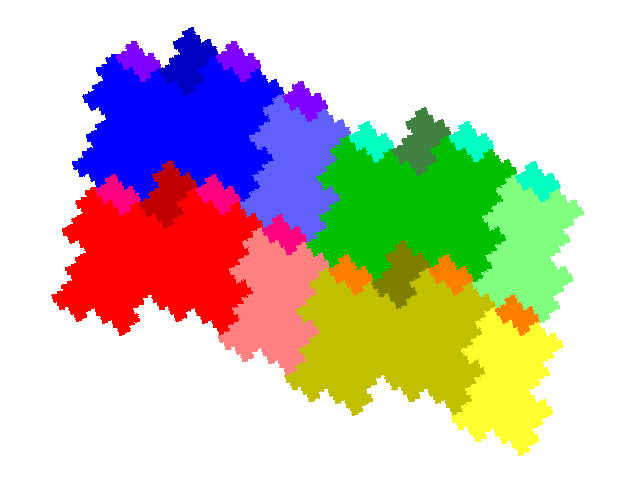
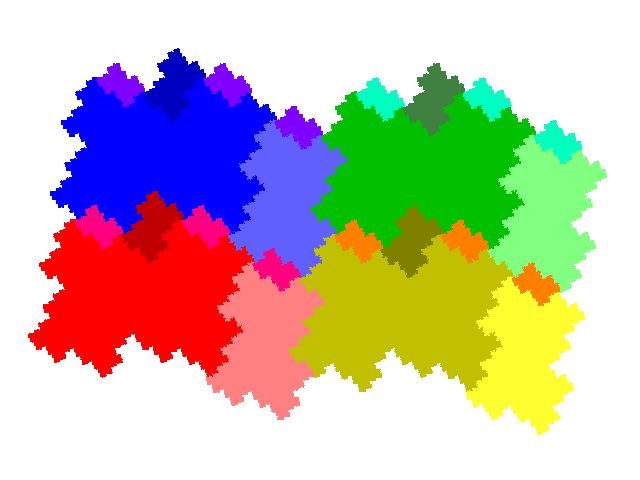
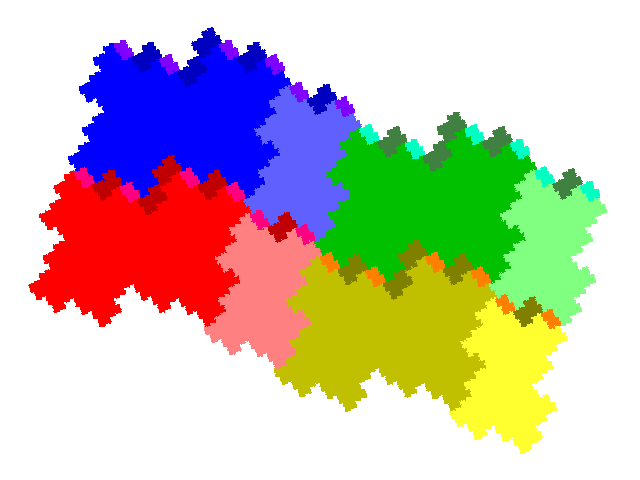
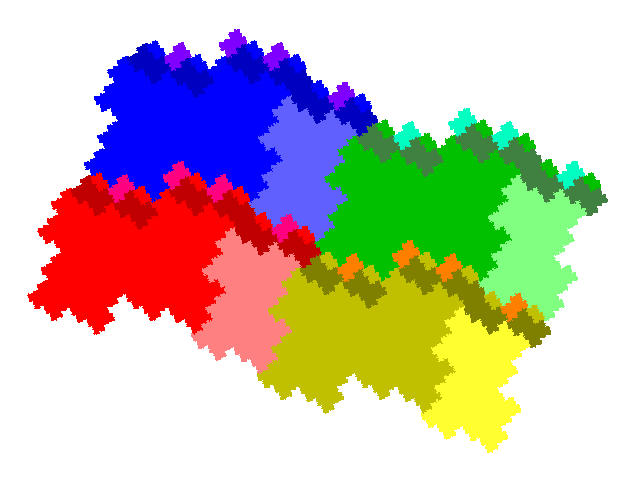
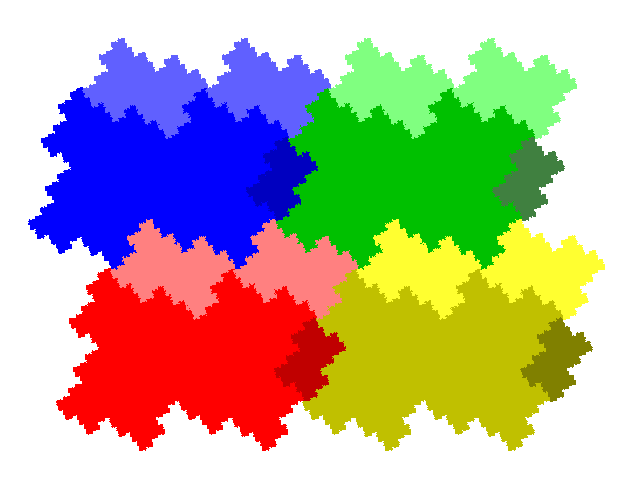
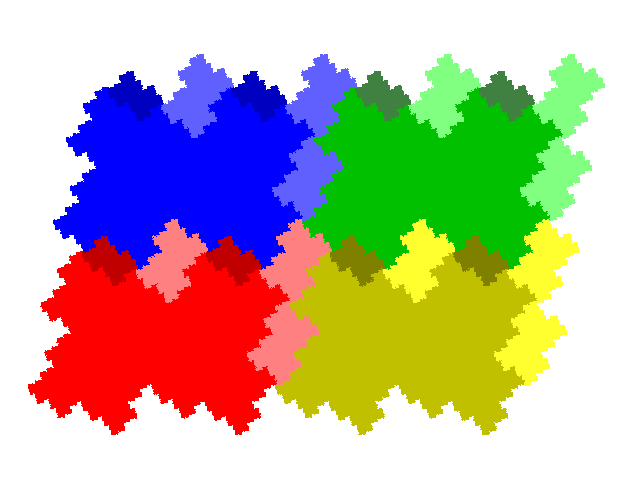
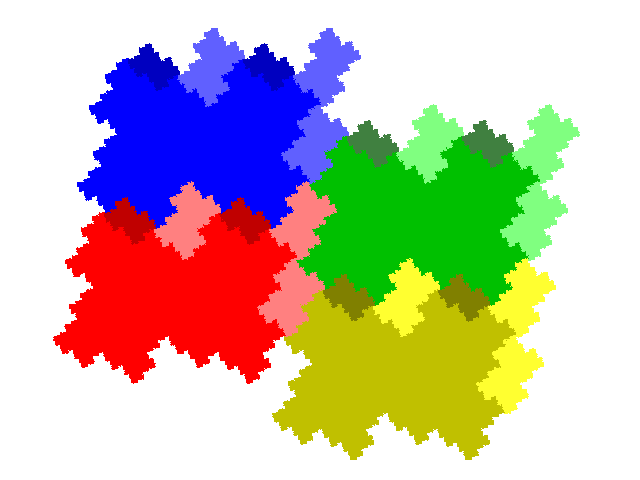
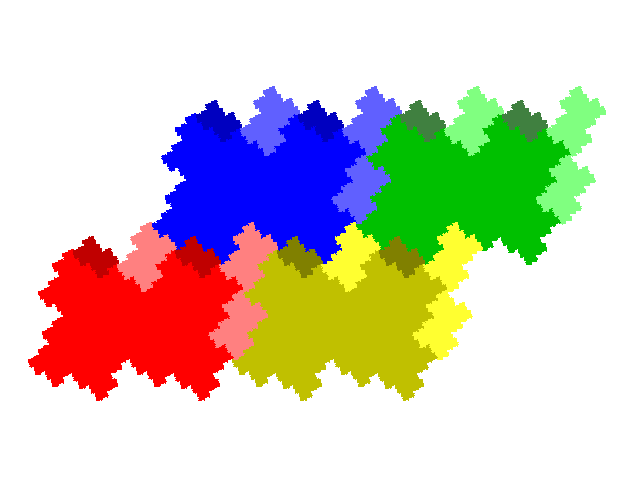
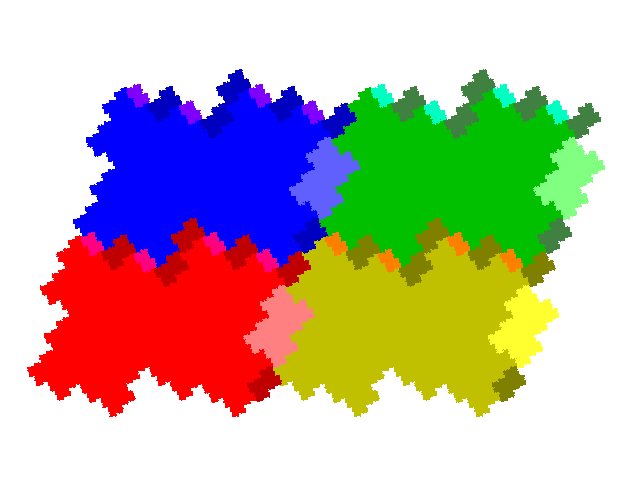
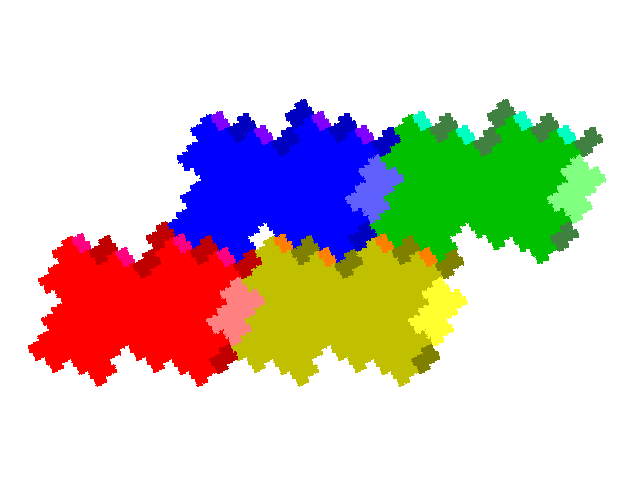
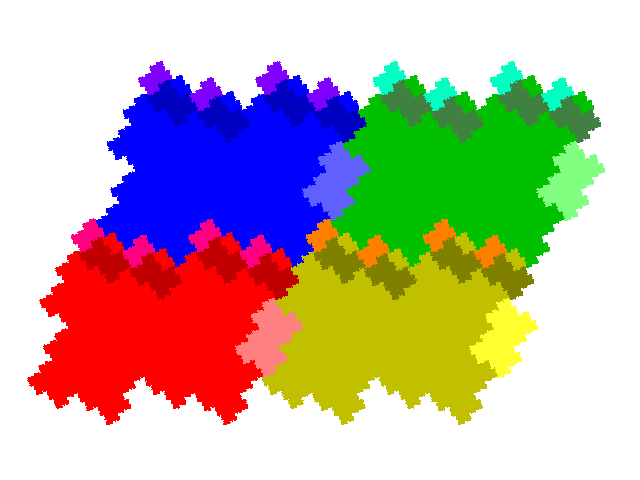
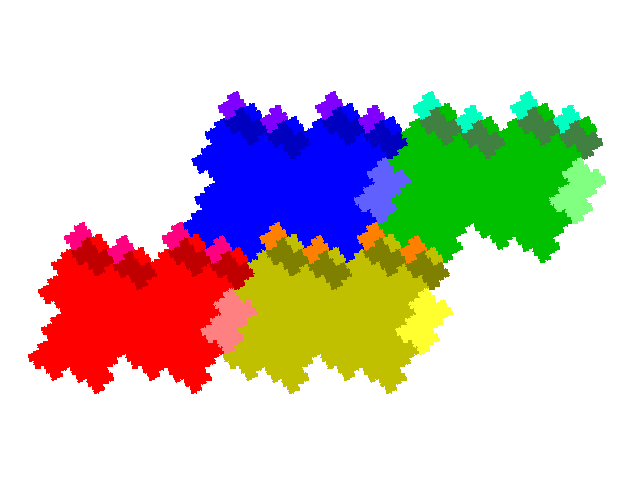
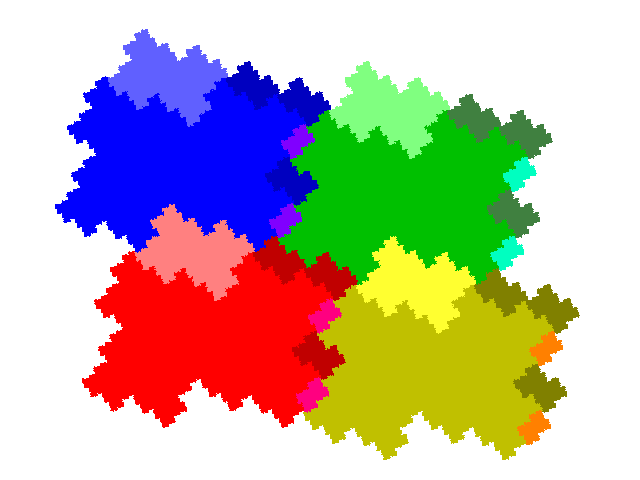
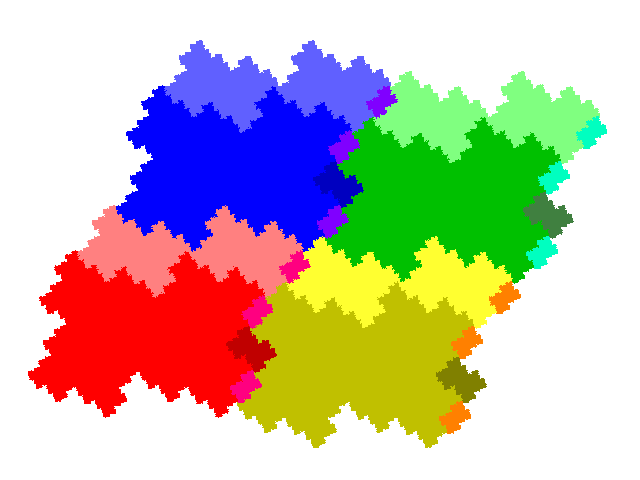
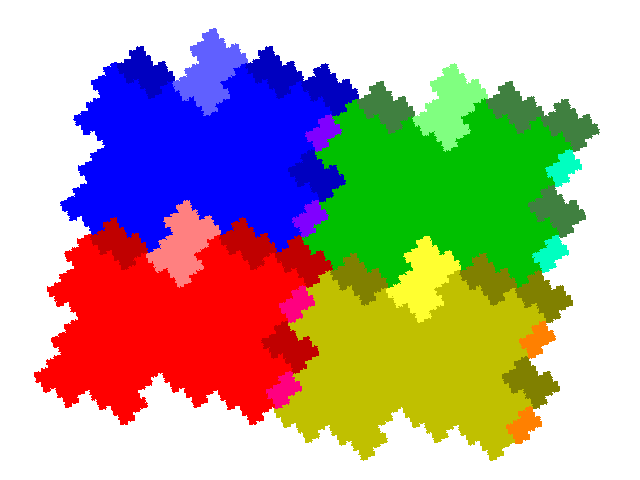
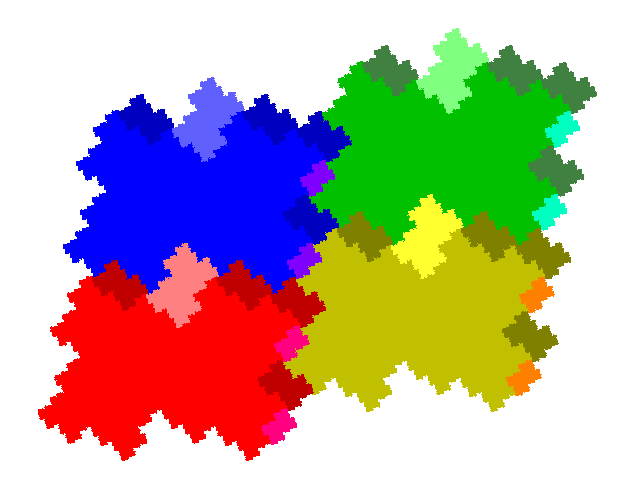
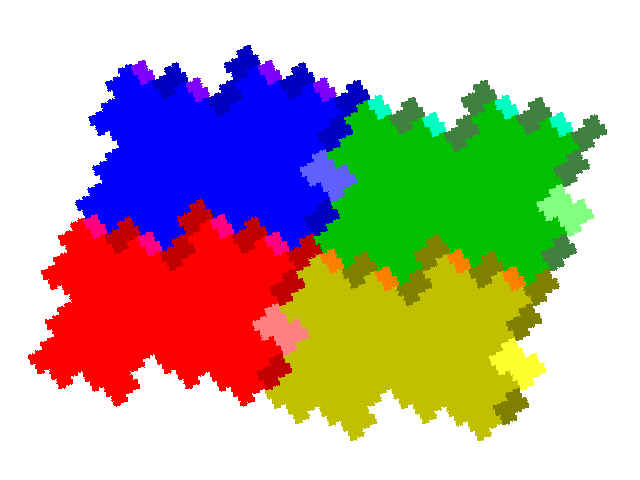
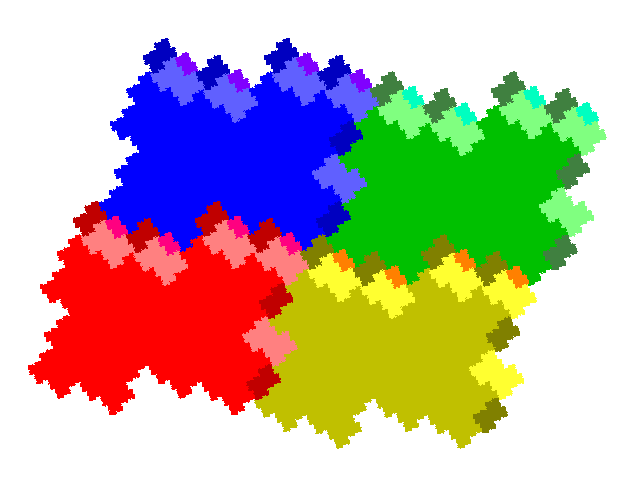
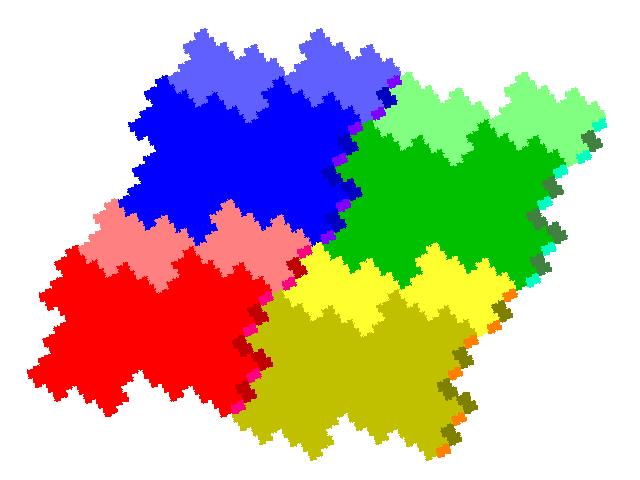
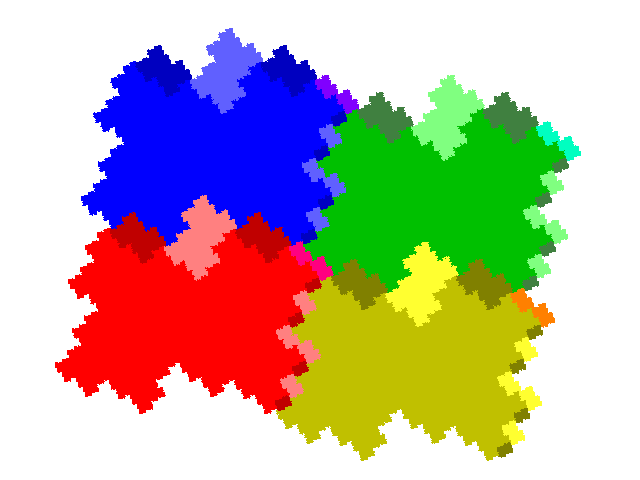
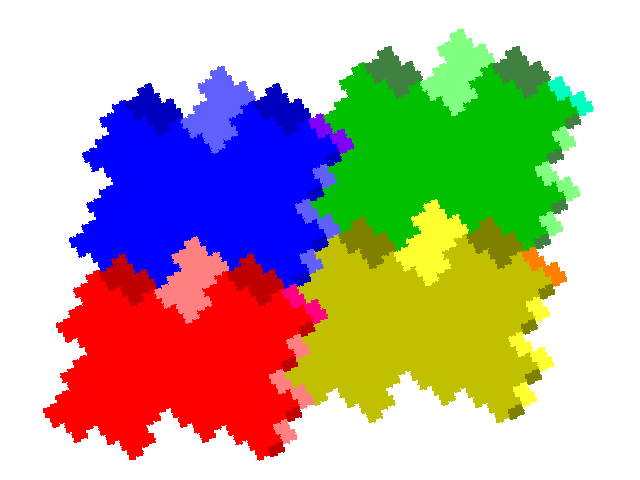
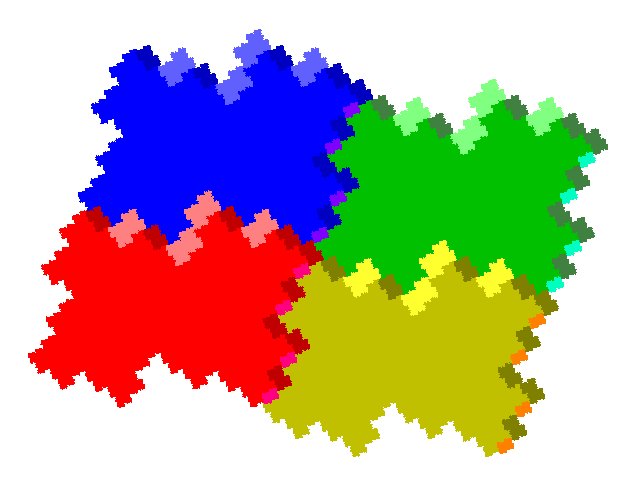
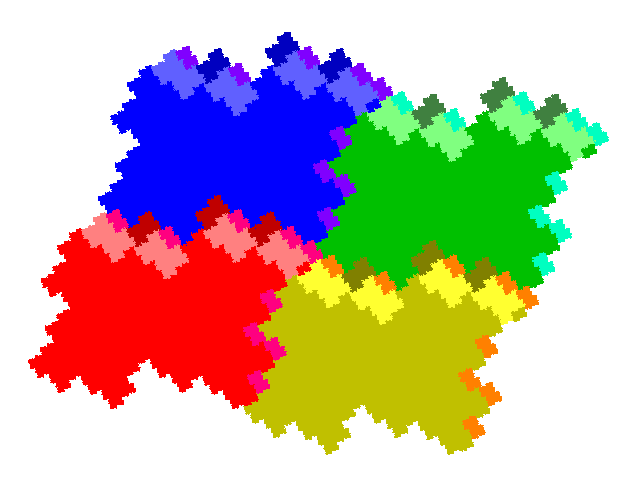
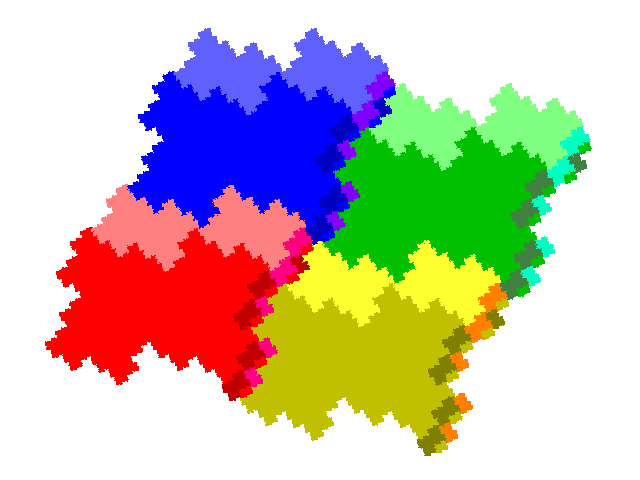
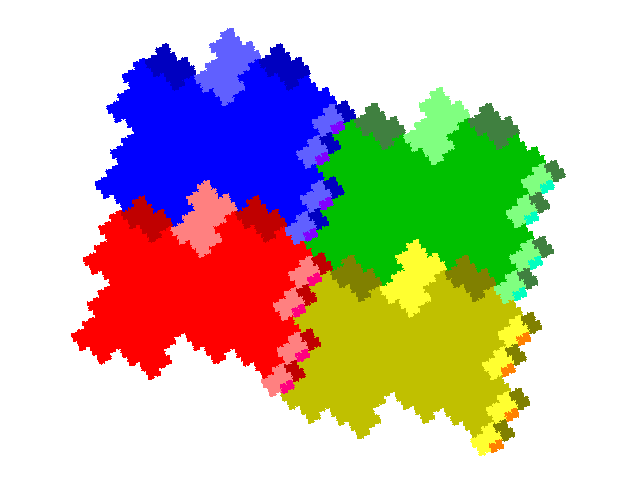
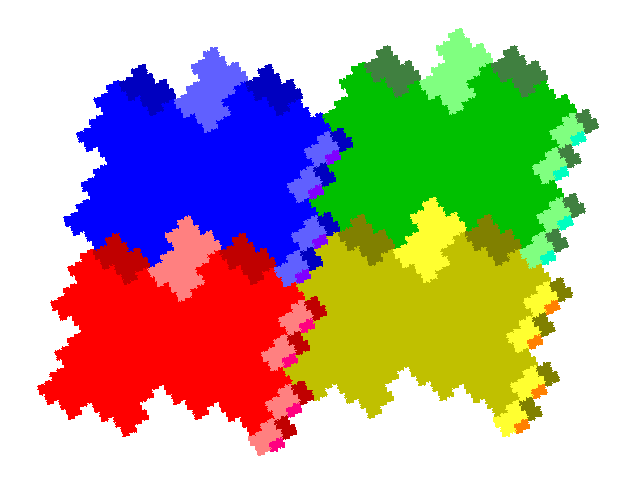
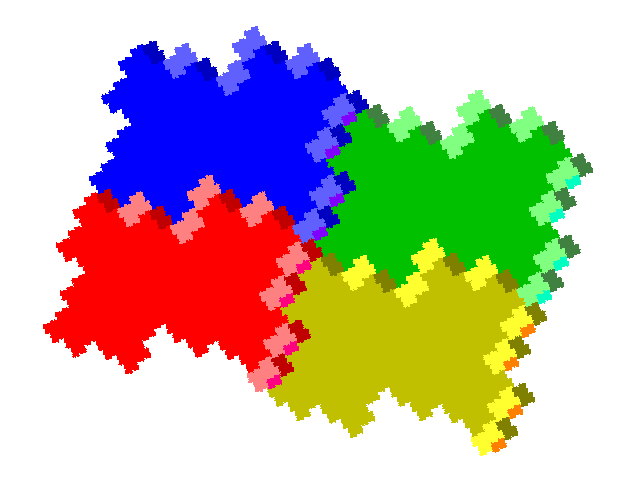
Once "2-row × 2-column" tilings have been produced they can be readily generalised to produce "m-row × n-column" tilings.
© 2015 Stewart R. Hinsley